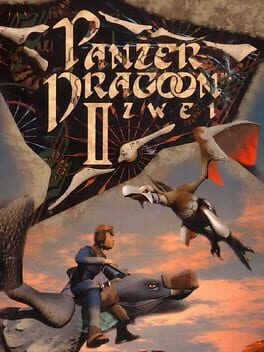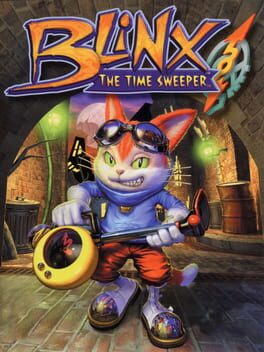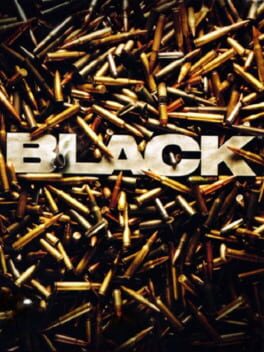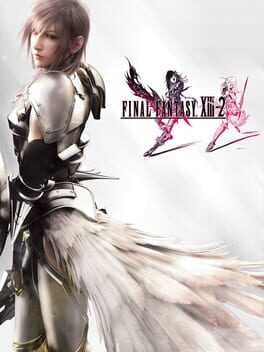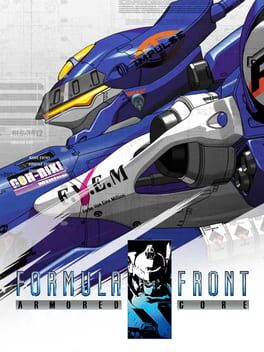Bio
"Rine"
He/Him
9's are 10's, 10's are 11's, and 8's are...8's.
Story-heavy games will be partially judged as such, otherwise I can't care enough about most game narratives to have it be a point of interest, unless it's been interwoven into the core game effortlessly in some way...AKA some of the 5-stars (AAKA freaking experiential ludokino buzzword buzzword). Some games are simply so elegant that they don't need that, though.
Sequels are also judged on how they expand or detract from prior games.
Going off preferred box art, different versions distinguished if there's enough good changes...or bad...usually bad...
"Rine"
He/Him
9's are 10's, 10's are 11's, and 8's are...8's.
Story-heavy games will be partially judged as such, otherwise I can't care enough about most game narratives to have it be a point of interest, unless it's been interwoven into the core game effortlessly in some way...AKA some of the 5-stars (AAKA freaking experiential ludokino buzzword buzzword). Some games are simply so elegant that they don't need that, though.
Sequels are also judged on how they expand or detract from prior games.
Going off preferred box art, different versions distinguished if there's enough good changes...or bad...usually bad...
Badges

Gone Gold
Received 5+ likes on a review while featured on the front page

Trend Setter
Gained 50+ followers

Gamer
Played 250+ games

2 Years of Service
Being part of the Backloggd community for 2 years

Pinged
Mentioned by another user

Loved
Gained 100+ total review likes

Popular
Gained 15+ followers

Donor
Liked 50+ reviews / lists

Shreked
Found the secret ogre page

Well Written
Gained 10+ likes on a single review

Liked
Gained 10+ total review likes

Best Friends
Become mutual friends with at least 3 others

Noticed
Gained 3+ followers

N00b
Played 100+ games
Favorite Games
394
Total Games Played
004
Played in 2024
102
Games Backloggd
Recently Played See More
Recently Reviewed See More
Admittedly haven't gotten around to a full replay, so take any comments on the game's structure with a grain of salt, but my recent tour of the super-bosses tells me that's where most of my enjoyment would come from, anyway. Each one manages to extract slightly different focuses from the combat system, but Gilgamesh in particular is genuinely excellent, with his constant use of Vendetta, Pain and Fog during staggers, and eventually Divider warranting consistently focused interaction from the player. My friend Godman has already discussed the basic appeal of this combat system, and that's all still the same here, but XIII-2 gets so much credit for not only its wider amount of great endgame content, but also the abundance of tiny fixes it makes as a whole. Quintessential example of life by a thousand band-aids, but even with all of these new refinements, the balance isn't broken: adjusting the targeting focus of Paradigms is still done outside of combat and is therefore still based around planning. Changing characters mid-battle can be favorable depending on the situation, but Noel and Serah's AI otherwise still behave according to their given setups, and ultimate abilities are now only usable once per fight. Smaller skillsets makes manual menu use in combat more manageable, and they've also been re-organized in a much cleaner fashion (especially for Ravagers). The way that the endgame weapon selection is balanced is a little contentious, but I think it now creates a fundamental decision for each fight: 5 bars with a faster ATB rate, or sacrificing a bit of speed for the full 6.
The monster system is my main focus of suspicion, not for those mechanics themselves (though, after trying the full Goblin Chieftain and Cloudburst setups, I give myself permission to use save edits for any future endeavors), but for the effect they have on Serah and Noel. Gratned, they do have good balance between each other, but especially as far as the Synergist/Saboteur roles are concerned, things are maybe a little too scuffed. Their pool of options is pretty limited, and Serah's AoE debuffs are particularly more situational than Noel's AoE buffs, though even these still have notable trade-offs compared to single-target ones. I think my basic thought is that a monster should be more capable in its given role than either Noel or Serah, both in abilities and passive perks, but probably not both of them combined. Part of my replay might involve adding in a few more of these classes' skills to them through editing, just to test the waters and see if it breaks things too much...I don't think it should be that bad.
That aside, monsters and the overhauled Crystarium still allow for a bit more flexibility on replays, especially compared to how the original XIII's two-member story arcs put a hard limit on the amount of variety available in the early-game. This is not to mention the way that optional areas and content are dispersed more evenly across the whole romp, and the nonlinearity isn't overwhelming since the focus is on exploring different smaller zones individually as opposed to something larger-scale. In support of this, there are several ways to alter the enemy encounter rate, and later Fragment Skills help you further cut down on bloat, resulting in a relatively lean experience.
The integration of characters and concepts from the original game into the narrative is the weakest aspect for me (my joke is that they designed Lightning's outfit first before figuring out how to make it fit into the story), but Noel, Caius, and Yeul's narrative is still pretty good, a neverending tragedy that ties them all together as much as it splits them apart. Hard not to at least recognize how Caius could be motivated to such an extreme course of action to save her, and while I still hate how the ending plays out, having Caius still come out on top is a bold choice.
Playing on PS3 also led to a handful of performance issues, but otherwise I find XIII-2 such a huge improvement over the original that I'm sometimes tempted to recommend going straight into it if you've ever been curious about the battle system more than anything else. I'll have to refresh on how badly the difficulty curve could crumble, though.
The monster system is my main focus of suspicion, not for those mechanics themselves (though, after trying the full Goblin Chieftain and Cloudburst setups, I give myself permission to use save edits for any future endeavors), but for the effect they have on Serah and Noel. Gratned, they do have good balance between each other, but especially as far as the Synergist/Saboteur roles are concerned, things are maybe a little too scuffed. Their pool of options is pretty limited, and Serah's AoE debuffs are particularly more situational than Noel's AoE buffs, though even these still have notable trade-offs compared to single-target ones. I think my basic thought is that a monster should be more capable in its given role than either Noel or Serah, both in abilities and passive perks, but probably not both of them combined. Part of my replay might involve adding in a few more of these classes' skills to them through editing, just to test the waters and see if it breaks things too much...I don't think it should be that bad.
That aside, monsters and the overhauled Crystarium still allow for a bit more flexibility on replays, especially compared to how the original XIII's two-member story arcs put a hard limit on the amount of variety available in the early-game. This is not to mention the way that optional areas and content are dispersed more evenly across the whole romp, and the nonlinearity isn't overwhelming since the focus is on exploring different smaller zones individually as opposed to something larger-scale. In support of this, there are several ways to alter the enemy encounter rate, and later Fragment Skills help you further cut down on bloat, resulting in a relatively lean experience.
The integration of characters and concepts from the original game into the narrative is the weakest aspect for me (my joke is that they designed Lightning's outfit first before figuring out how to make it fit into the story), but Noel, Caius, and Yeul's narrative is still pretty good, a neverending tragedy that ties them all together as much as it splits them apart. Hard not to at least recognize how Caius could be motivated to such an extreme course of action to save her, and while I still hate how the ending plays out, having Caius still come out on top is a bold choice.
Playing on PS3 also led to a handful of performance issues, but otherwise I find XIII-2 such a huge improvement over the original that I'm sometimes tempted to recommend going straight into it if you've ever been curious about the battle system more than anything else. I'll have to refresh on how badly the difficulty curve could crumble, though.
Really enjoy popping on the PSP just to have a fight or two here and there, but I'm still a little conflicted about Formula Front as a whole. Being solely based around the Arena and AC fights gives it a higher baseline of quality, but a game like Silent Line has both great missions and an enjoyable Arena in relatively equal measure, which sort of puts a cap on how much you might get out of this. At the same time, it sticks to that structure very well, opting to completely do away with a financial economy for the sake of keeping customization as the primary and stress-free focus. The saying about Nine Breaker is that it trains you on the fundamental mechanics solely in preparation for you to be able to handle Last Raven, and I'd joke that Formula Front fills that same kind of niche in regards to AC building. By both only pitting you against ACs and also removing any long-term decision-making or risks, you get to engage with this system while also testing it in more practical scenarios than target tests and obstacle courses. I think restricting any given parts to only one AC at a time is ultimately in good service of that idea, as it helps keep players from being repetitive in their setups and exposes a wider pool of viable parts, namely in regards to boosters, radiators, and the associated overhauled heat management that returns from Nexus. That said, I find this idea is better expressed in the PS2 version, where your entire team of ACs goes against another in a relay-style endurance match. Since every individual AC is more important with this approach, you're pushed into seeing the balance more clearly, rather than how the PSP's adherence to 1v1s doesn't forcibly stop you from just making a singular powerhouse like in other games. Thankfully, enemy variety is still up to par, especially combined with the International edition's post-game (but barring the frequent spam of Napalm Rockets), and the arena selection is also great, with a good blend of open and constrained spaces, complicated geometry, the occasional radar interference, and even a returning locale from Silent Line...easy bonus points for me there.
As for the A.I. building, I can certainly speak to the novelty and joy of making something like a flamethrower and parry blade build work successfully, but even with traditional ACs, it's still really just that: novel. Credit where credit is due, it's presented in a pretty digestible way with plenty of optional tutorials, but it's not fundamentally integral to the scenarios or anything, and once you make a good A.I. setup for any given build, you can kinda just stick with it without much need to adapt or revise for different opponents. The systems on the whole are also a little unbalanced. Particularly, in the A.I. tuning screen, in which you assign a pool of points into categories you want your A.I. to be efficient in, the "Offense" and "Defense" categories are basically dump stats that don't affect your AC's approach in any distinguishable way, giving you a lot of free points to put towards more fundamental stats like terrain location and energy efficiency. Even as one of my builds actively uses the head piece that has the lowest amount of these points, it's still trivial to max out all of the important stats first and not have too much of a cut in performance compared to the average AC. Still, I appreciate the theoretical ways this system interacts with your AC parts, since good radars could let you offset points in Search Control, generators for Energy Control, and so on. A lower average total of points might have been interesting to see here.
Similarly, while the Operations mechanic allows you to guide your AC towards more specific behaviors, it has some quirks. Tying their activation to time brackets (Chip 1 is in use from 0s-30s, Chip 2 from 30s-60s, etc.) is pretty rigid, and since AC fights can be so dynamic, it can be difficult to set them up in an optimal way, especially when fights also rarely go past the two minute mark. My suggestion would be to allow for the activation of any chip mid-battle, on or off, but keep them at only 30 total seconds of use across the match. I'd say that's just enough manual control while still leaving the heavy lifting out of your hands. Additionally, some of the chip distinctions might be too specific: chips that use Back parts in particular are very clear about whether or not they use only the part on your AC's right side, or the left, which would be fine if each type had a variations for both sides, but the lack of consistency in that aspect is…not fatally bad, but still a strange omission. Ideally you're setting up your chipset around your builds, not vice-versa.
The system where you adjust the basic general behaviors of your ACs is probably the best facet of the A.I. mechanics, as it's easy to understand the decisions you're making in any given category. What kind of range and attack variety do you want an AC to stick to given its loadout? How much mobility do you want and what types of movement are most important? Should it be aggressive or focused on survivability? Not only are these parameters simple, but since there's no variable resource tied to adjusting them, it's very purely balanced among every possible build, especially when the associated strengths and weaknesses are so universal.
All things considered, the building is certainly a lot more involved here than the usual Armored Core setup, so the big question is if the end result is A.I. that functions competently, and I'd say things are actually pretty impressive in that aspect…if anything, it bunny-hops well. The A.I. does its job just fine most of the time, but there's also rare hiccups where it can get put in an awkward standstill, usually when backed into a corner, and not know what to do, which can be frustrating to see. Thankfully, if you don't want to bother with any of this, you can always opt to play with manual controls, which is why I can't dock it too many points (at least with the context of re-releases). If you're a true one who knows tank controls are king, the only concession on PSP is that vertical aiming is automated, but it actually works pretty well. I only ever ran into problems when I was intentionally toying with the enemy A.I, in general play it's about as accurate as can be...I mean, if you're up against a close-range hopping trickster, you'd likely be lagging with your aim about as much as the game does here.
Still, once I finally got around to things, I enjoyed my time messing with the A.I.. There's something nice about being in complete control of AC building while also letting the game handle all of the dexterous movement for you. If the concept speaks to you, I'll once again point to the PS2 version, where this is the only way to "control" ACs and it's all up to your A.I. skills to come out on top. If you want the hardcore Formula Front experience, that might be the way to go, especially since it also offers a bit more to the lore and narrative of this specific universe (at least, if you know Japanese).
Even on PSP, this aspect is still a unique part of FF's cutesy identity. The experimental mechanics stand out from the rest of the series, sure, but I feel like it's primarily a black sheep because of how it re-contextualizes the traditional Armored Core presentation into something more light-hearted. The player premise of a struggling mercenary tossed around by corporate powers is morphed into that of being a professional AC and AI builder, hired by an eager new sports team trying to make a name for themselves amongst pros backed by big-name sponsors. While light on lines, the mostly stoic personal operators from before have been swapped out for an excitable match commentator, always seeming on the edge of his seat and complete with his own cheesy "Ready? Go!"...well, with Japanese audio, at least. Getting mail used to be more cut-and-dry, but now you're reading about responses to low-tier upsets (usually by your hand), casual interviews with top team Architects on their perceived trajectories of the future of the titular Formula Front sports league, scoops on petty sponsorship drama, and, my favorite, the music concert of a team so popular they fully book the audience seating. Music's more upbeat on the whole with a lot more tunes in major keys (even if I don't find much of it that memorable), and even color schemes have taken a turn for the lighter. Menus are predominantly white and blue, and there's a lot more opponents unafraid of almost obnoxiously vibrant color palettes…gotta give shoutouts to the chef who painted his AC's head to look like a tomato. It's all very feel-good, and works in tandem with the aforementioned lack of mechanical tension to create something more appropriate for an on-and-off system like the PSP. Don't stress too much, come in, have a good time, and even when a fight's giving you trouble, keep at it and you'll be just fine.
As for the A.I. building, I can certainly speak to the novelty and joy of making something like a flamethrower and parry blade build work successfully, but even with traditional ACs, it's still really just that: novel. Credit where credit is due, it's presented in a pretty digestible way with plenty of optional tutorials, but it's not fundamentally integral to the scenarios or anything, and once you make a good A.I. setup for any given build, you can kinda just stick with it without much need to adapt or revise for different opponents. The systems on the whole are also a little unbalanced. Particularly, in the A.I. tuning screen, in which you assign a pool of points into categories you want your A.I. to be efficient in, the "Offense" and "Defense" categories are basically dump stats that don't affect your AC's approach in any distinguishable way, giving you a lot of free points to put towards more fundamental stats like terrain location and energy efficiency. Even as one of my builds actively uses the head piece that has the lowest amount of these points, it's still trivial to max out all of the important stats first and not have too much of a cut in performance compared to the average AC. Still, I appreciate the theoretical ways this system interacts with your AC parts, since good radars could let you offset points in Search Control, generators for Energy Control, and so on. A lower average total of points might have been interesting to see here.
Similarly, while the Operations mechanic allows you to guide your AC towards more specific behaviors, it has some quirks. Tying their activation to time brackets (Chip 1 is in use from 0s-30s, Chip 2 from 30s-60s, etc.) is pretty rigid, and since AC fights can be so dynamic, it can be difficult to set them up in an optimal way, especially when fights also rarely go past the two minute mark. My suggestion would be to allow for the activation of any chip mid-battle, on or off, but keep them at only 30 total seconds of use across the match. I'd say that's just enough manual control while still leaving the heavy lifting out of your hands. Additionally, some of the chip distinctions might be too specific: chips that use Back parts in particular are very clear about whether or not they use only the part on your AC's right side, or the left, which would be fine if each type had a variations for both sides, but the lack of consistency in that aspect is…not fatally bad, but still a strange omission. Ideally you're setting up your chipset around your builds, not vice-versa.
The system where you adjust the basic general behaviors of your ACs is probably the best facet of the A.I. mechanics, as it's easy to understand the decisions you're making in any given category. What kind of range and attack variety do you want an AC to stick to given its loadout? How much mobility do you want and what types of movement are most important? Should it be aggressive or focused on survivability? Not only are these parameters simple, but since there's no variable resource tied to adjusting them, it's very purely balanced among every possible build, especially when the associated strengths and weaknesses are so universal.
All things considered, the building is certainly a lot more involved here than the usual Armored Core setup, so the big question is if the end result is A.I. that functions competently, and I'd say things are actually pretty impressive in that aspect…if anything, it bunny-hops well. The A.I. does its job just fine most of the time, but there's also rare hiccups where it can get put in an awkward standstill, usually when backed into a corner, and not know what to do, which can be frustrating to see. Thankfully, if you don't want to bother with any of this, you can always opt to play with manual controls, which is why I can't dock it too many points (at least with the context of re-releases). If you're a true one who knows tank controls are king, the only concession on PSP is that vertical aiming is automated, but it actually works pretty well. I only ever ran into problems when I was intentionally toying with the enemy A.I, in general play it's about as accurate as can be...I mean, if you're up against a close-range hopping trickster, you'd likely be lagging with your aim about as much as the game does here.
Still, once I finally got around to things, I enjoyed my time messing with the A.I.. There's something nice about being in complete control of AC building while also letting the game handle all of the dexterous movement for you. If the concept speaks to you, I'll once again point to the PS2 version, where this is the only way to "control" ACs and it's all up to your A.I. skills to come out on top. If you want the hardcore Formula Front experience, that might be the way to go, especially since it also offers a bit more to the lore and narrative of this specific universe (at least, if you know Japanese).
Even on PSP, this aspect is still a unique part of FF's cutesy identity. The experimental mechanics stand out from the rest of the series, sure, but I feel like it's primarily a black sheep because of how it re-contextualizes the traditional Armored Core presentation into something more light-hearted. The player premise of a struggling mercenary tossed around by corporate powers is morphed into that of being a professional AC and AI builder, hired by an eager new sports team trying to make a name for themselves amongst pros backed by big-name sponsors. While light on lines, the mostly stoic personal operators from before have been swapped out for an excitable match commentator, always seeming on the edge of his seat and complete with his own cheesy "Ready? Go!"...well, with Japanese audio, at least. Getting mail used to be more cut-and-dry, but now you're reading about responses to low-tier upsets (usually by your hand), casual interviews with top team Architects on their perceived trajectories of the future of the titular Formula Front sports league, scoops on petty sponsorship drama, and, my favorite, the music concert of a team so popular they fully book the audience seating. Music's more upbeat on the whole with a lot more tunes in major keys (even if I don't find much of it that memorable), and even color schemes have taken a turn for the lighter. Menus are predominantly white and blue, and there's a lot more opponents unafraid of almost obnoxiously vibrant color palettes…gotta give shoutouts to the chef who painted his AC's head to look like a tomato. It's all very feel-good, and works in tandem with the aforementioned lack of mechanical tension to create something more appropriate for an on-and-off system like the PSP. Don't stress too much, come in, have a good time, and even when a fight's giving you trouble, keep at it and you'll be just fine.

